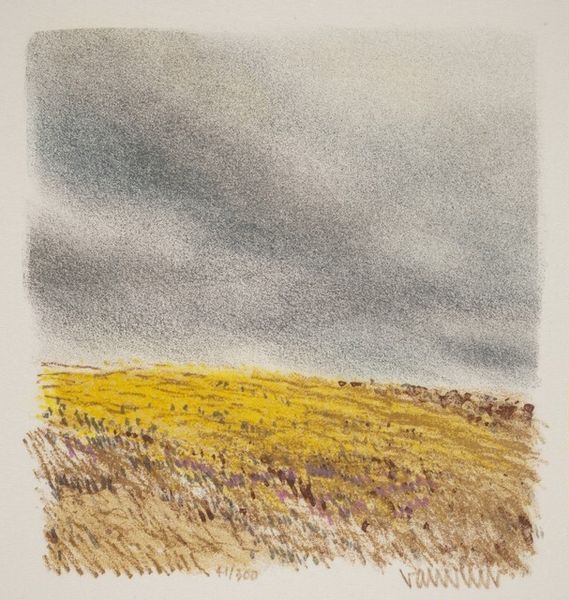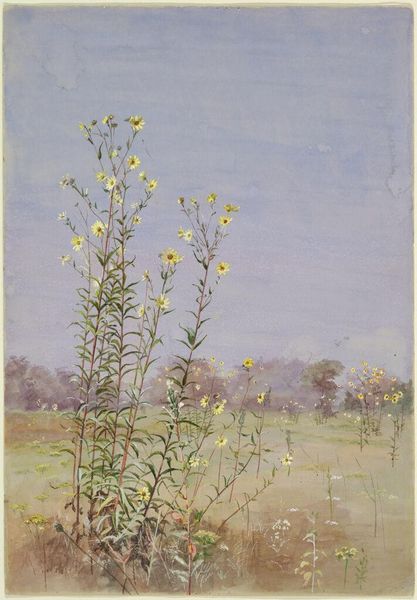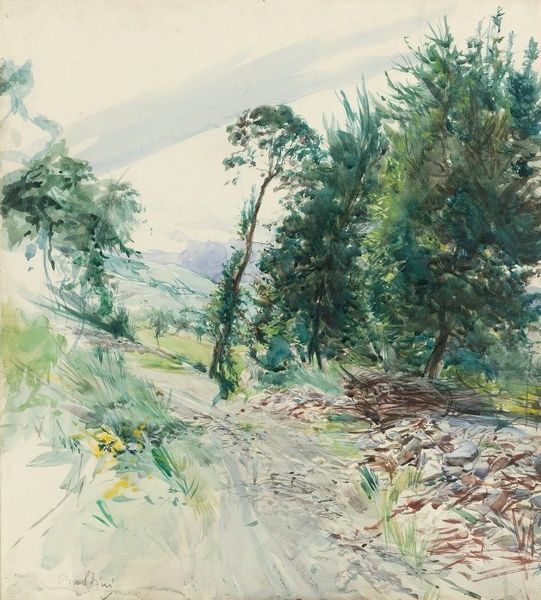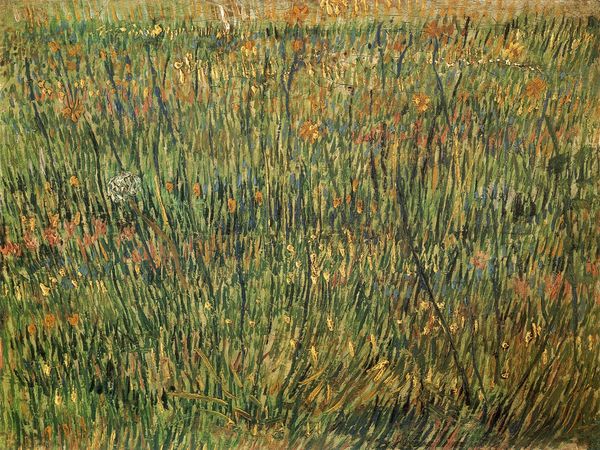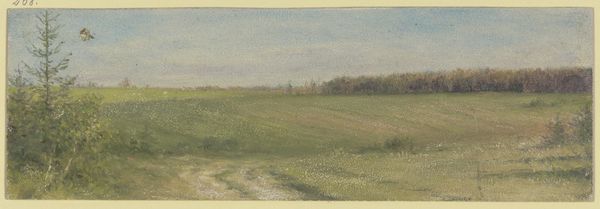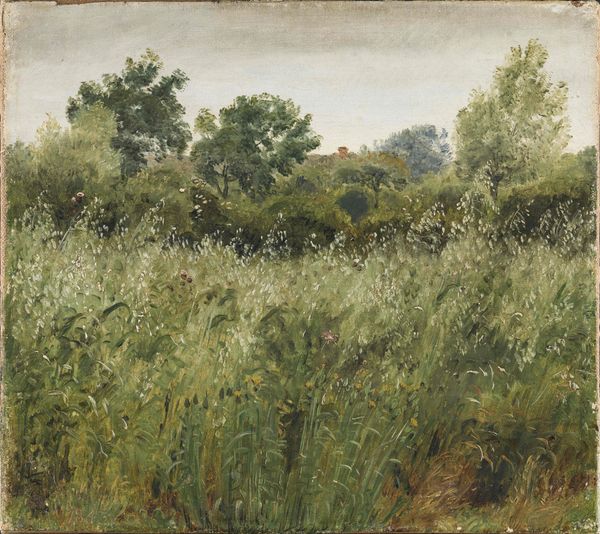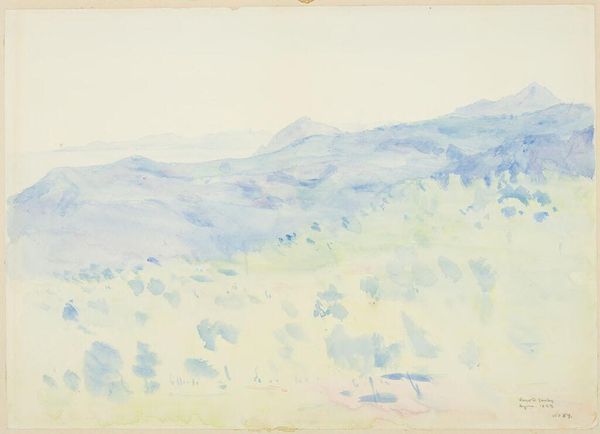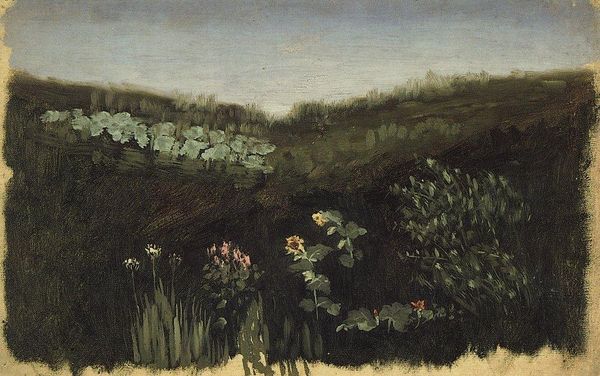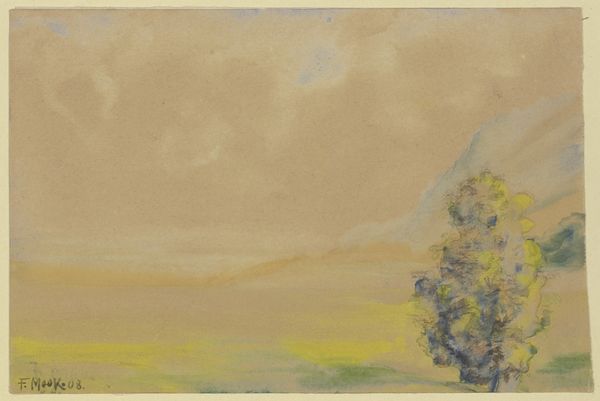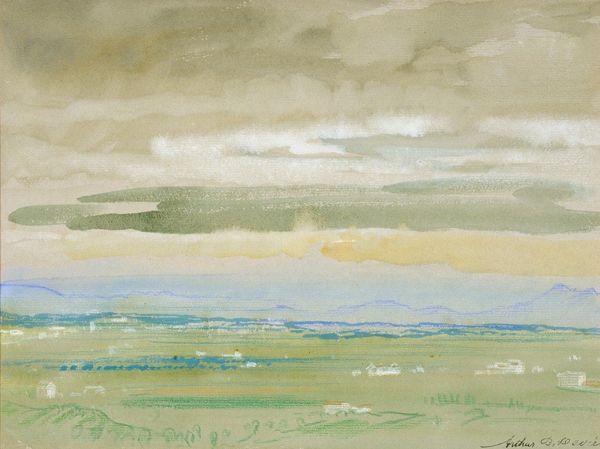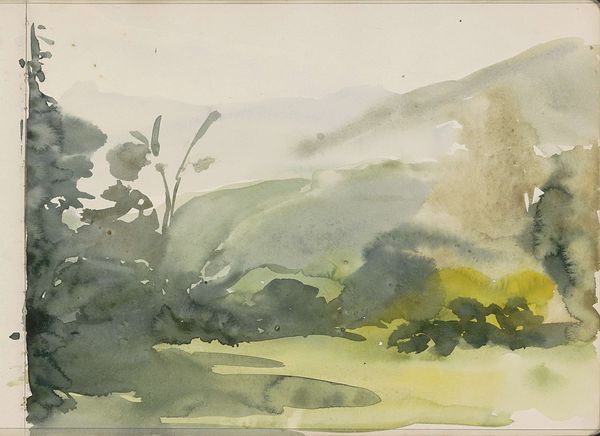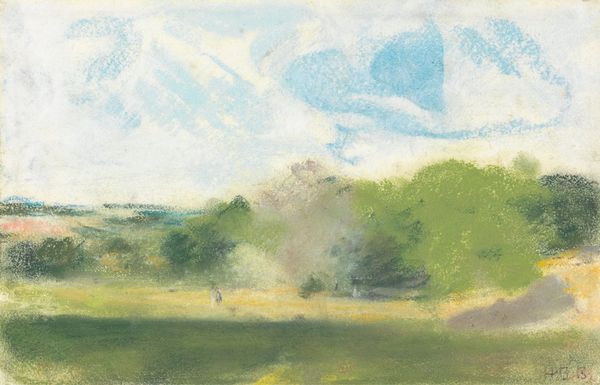
plein-air, watercolor
#
water colours
#
impressionism
#
plein-air
#
landscape
#
watercolor
#
watercolor
#
realism
Copyright: Public Domain: Artvee
Curator: Here we have Edwin Austin Abbey's "Landscape with Wildflowers." It is an excellent example of his excursions into impressionism. Editor: Immediately, I notice the texture, or rather the lack thereof. It feels light, breezy, almost fleeting due to the watercolours, which I appreciate for their subtle expressiveness. Curator: He primarily worked as an illustrator, and that background informs his approach to watercolor here. There is a focus on capturing light and atmosphere. These were most likely painted "en plein air", or outdoors. Editor: "En plein air"… You can almost feel the breeze, seeing how the paint subtly pools and gathers. It emphasizes a temporal quality, that momentariness crucial to understanding artistic intent, and reflects a very transient depiction of nature. The use of paper is interesting here, don't you think? Curator: Absolutely. This was part of a broader art movement focused on depicting everyday life and landscapes, challenging the formal conventions that dominated academic painting. It fits within the burgeoning popular interest of landscape at this time. Editor: These landscapes become increasingly precious, the material and means taking centre stage: the paper stock and choice of watercolor itself is essential, wouldn't you agree? Curator: Very much so. The accessibility of watercolor also meant it became a democratizing medium, available to more artists. It represents shifting societal attitudes towards art production and consumption. Editor: A really evocative image, if perhaps a bit understated, it leaves a distinct impression because of Abbey’s skillful handling of humble materials. Curator: A beautiful expression of his more free, landscape work, I'd agree. It captures a quiet moment, now preserved on paper for generations.
Comments
No comments
Be the first to comment and join the conversation on the ultimate creative platform.
